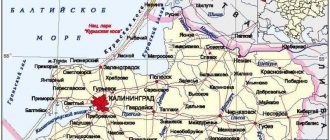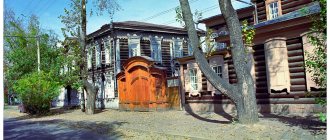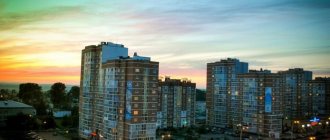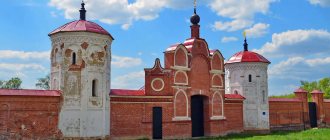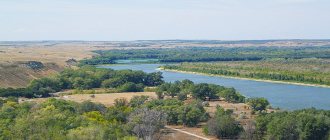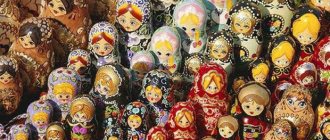The Volgograd region is a territory with a length of more than 400 km. A satellite map of the Volgograd region clearly shows that this territory has a favorable location.
The map is a reliable assistant on any journey. It makes it easy to make a trip plan. This is an excellent opportunity to create convenient routes for various excursions.
Using a road map of the Volgograd region, you can see that the Volga-Don Canal flows along the region. This water artery connects the Volga and Don.
Industries such as mechanical engineering and agriculture have been developing in the region for a long time. Ships, tractors, as well as drilling equipment and metallurgy are produced. The region is located in the south of the country and is included in the territory of the Southern Federal District.
What holiday is it today?
February 10, 2022, Thursday
Today are holidays, events: Diplomat's Day Tomorrow: World Sick Day Discovery of insulin
Today is the Orthodox holiday: St. Ephraim the Syrian. Venerable Ephraim of Novotorzhsky. Venerable Ephraim of Pechersk, Bishop of Pereyaslavl. Venerable Theodosius of Totem, Spasosumorin of the monastery, leader and founder... Tomorrow: Transfer of the relics of the holy martyr Ignatius the God-Bearer. Saints Gerasim, Pitirim, Jonah, bishops of Great Perm, Ustva...
Today is a national holiday: Ephraim's Day... Tomorrow: Lawrence's Day
Seasons
Seasons, four periods of the year (spring, summer, autumn and winter) characterized by certain average temperatures. The period during which the Sun passes through one of these sectors is called the season. Spring in the Northern Hemisphere and autumn in the Southern Hemisphere begin when the Sun passes through the initial circle of declination and its right ascension is 0° (vernal equinox). Summer in the Northern Hemisphere and winter in the Southern Hemisphere occur when the sun's right ascension is 90° (summer solstice). Autumn in the Northern Hemisphere and spring in the Southern Hemisphere begin when the sun's right ascension is 180° (autumnal equinox). The beginning of winter in the Northern Hemisphere and summer in the Southern Hemisphere is considered to be the winter solstice, when the direct ascension of the Sun is 270°... Next: Seasons. Russian folk calendar. Monthly words...
Folk calendar about every day
Every day one season always replaces another and this determines a person’s way of life. In connection with this, a folk calendar was formed in which there were practically no nameless, unmarked days. Every day was special, had its own purpose. All this was determined by climate conditions and astrological phenomena.
A calendar is a system for counting periods of time. The first calendars arose a long time ago, in ancient times, because there was a need to measure time. The word calendar comes from the Latin words caleo - to proclaim and calendarium - debt book. This is due to the fact that in Ancient Rome the beginning of each month was especially proclaimed, and because it was customary to pay debts on the first day of the month. Different peoples counted time differently. Some calendars are based on the changing phases of the moon - lunar calendars; in others - the change of seasons - sunny; in others, the length of the year was coordinated with the change of seasons, and the counting of months was associated with the phases of the Moon. Such calendars are called lunisolar.
In Rus', the calendar was called a monthly calendar. Every day, the month book covered the entire year of peasant life, “describing” day by day, month after month, where each day had its own holidays or weekdays, customs and superstitions, traditions and rituals, natural signs and phenomena. The cyclical nature of the calendar is reminiscent of human life, where spring is youth, summer is heyday, autumn is the time of harvesting fruits (it’s good if there are some, otherwise you can live your life without collecting fruits), winter is the time of wisdom and peace. This cyclicality and rhythm determined the way of life of the farmer. The folk calendar was an agricultural calendar, which was reflected in the names of the months, folk signs, rituals and customs. Even the determination of the timing and duration of the seasons is associated with real climatic conditions. Hence the discrepancy between the names of the months in different areas... Next: Folk calendar...
Population of Volgograd
According to data as of January 1, 2014, 1 million 18 thousand people live in the city. To maintain the status of a “million-plus population,” the borders were expanded, and in March 2010, the territories of the urban district were annexed to Volgograd. Today Volgograd ranks 13th in terms of population in the Russian Federation.
Volgograd is multinational. Different peoples live on its territory. More than 120 representatives of various cultures and nationalities settled in this territory. Many of them have existed here since ancient times. But the majority of the population is Russian (90% as of October 2010). The second largest population is occupied by Kazakhs, followed by Ukrainians and Armenians.
Proportionally, there are more women in the city (55%). And more and more residents are of working age (22.9%). But it is precisely these figures that speak of stability and prolongation of life of the population. At the same time, the number of births per 1000 people is 9.9, and the number of deaths is 13.1.
The population is distributed unevenly in Volgograd. The new areas accommodate many more people than the previously built ones. The population of Dzerzhinsky, the youngest region of the city, is more than 180 thousand, and Krasnoarmeysky is more than 167 thousand. In total, Volgograd consists of 7 districts and several small islands on the Volga. In addition, there are a lot of private houses in areas remote from the center. And due to the nature of the terrain, small hills on the territory, some areas are not inhabited. And it seems that the city is being “torn apart” by areas where there are no buildings.
Private sector of the city of Volgograd
Fishing calendar for every day
The fishing calendar should not be taken as an absolutely indisputable truth. Fish biting is greatly influenced by a whole range of natural factors, as well as the influence on the nature of man himself. You must not forget that the fish’s bite depends and is determined not only by the calendar dates and biological cycles of their life, reflected in the calendar, but also, no less, by the state of their habitat; the bite also depends on weather conditions: air and water temperatures, cloudiness, wind direction and strength, etc... Next: Fishing calendar...
Content
- 1 Millionaire cities with more than 1 million people 1.1 Volgograd
- 2.1 Volzhsky
- 3.1 Kamyshin
- 4.1 Mikhailovka
- 5.1 Surovikino
Orthodox calendar about every day
Orthodox calendar: Orthodox, Church and Christian holidays.
The church year is an alternation of weekdays and holidays. On weekdays, a person is called to work “by the sweat of his brow to earn his bread.” Holidays are given in order to feel liberation, to rise above the bustle and routine of the world, to feel involved in the highest of worlds, “where there are no illnesses, sorrows and sighs, but endless life.” Since ancient times, holiday cycles have been associated with the seasons. The pagans associated them with the worship of the forces of nature, the cult of which in the Old Testament was replaced by gratitude to the Creator for the universe. And although the connection between holidays and the seasons has not completely lost its power, since God is present in everything, in the plant and animal world, in human works, it nevertheless faded into the background, giving way to a spiritual foundation built on the Sacred Scriptures. The history of Orthodox holidays dates back to the times of the Old Testament. Each of the Orthodox holidays is dedicated to the remembrance of the most important events in the life of Jesus Christ and the Mother of God, as well as the memory of saints... Next: Orthodox calendar...
Enterprises and work in Volgograd
Volgograd is a large city with developed industry. The largest contribution to development is made by heavy industries, namely: metallurgy, mechanical engineering, metalworking, chemical enterprises, and energy.
Electric and heat power enterprises: Volzhskaya HPP (the largest in the European part of Russia), Volgogradskaya CHPP-3 and CHPP-2, Volgogradskaya GRES.
Metallurgical enterprises: producing special-purpose steel; OJSC Volgograd Aluminum; LLC Volgograd Non-Ferrous Metals Plant. Metalworking and mechanical engineering: OJSC "Volgogradneftemash" - products for oil production; OJSC "Volgograd Drilling Equipment Plant"; OJSC "Volgograd Plant of Tractor Parts and Normals"; JSC "Volgograd Transport Engineering Plant"; OJSC "Volgograd Shipyard" and others.
Chemical plants and enterprises: OJSC "Kaustik" is one of the largest chemical companies. ; OJSC "Plastcard"; JSC Volgograd Oxygen Plant.
These enterprises account for 46% of total industrial production. They provide jobs for most of the population. But as a result of their work, significant environmental pollution occurs.
A large number of people are involved in the food and service industries. The city always requires specialists with technical education, since the above-mentioned enterprises require qualified personnel. Also in Volgograd there are many companies involved in the sale of manufactured products; therefore, people are required who are ready to work in the trade sector.
BC Volgograd City
The chains of large stores “Magnit”, “Pyaterochka”, “Lenta” invite employees to work almost constantly. The average salary in the city is 15-20 thousand rubles in the spring of 2012.
Russian folk calendar for every day
The word “sign” comes from the word “notice”, i.e. observe. As a result of observing what happens around a person every day, he accumulates life experience. This knowledge was passed down from generation to generation, carefully preserved and people trusted it as a sacred book. Many signs have come to us from the depths of centuries without losing their knowledge. Each of us is free to choose: to dismiss all this as an absurd superstition or to take a closer look at the signs and take the centuries-old experience of generations more seriously. Most of us, when taking exams, ask them to scold them, boasting about some kind of good fortune or luck, spit so as not to jinx them or knock on wood, take a detour if a black cat crossed the road, are afraid of the number 13 and much more. And who among us does not have lucky things, numbers? Who has never resorted to the help of fate at least once in their life, who has not believed in secrets? It’s as if everything connected with signs is hidden somewhere deep in our subconscious. Often we remember them mechanically, unconsciously, or just as a joke. But, undoubtedly, the signs contain a lot of accurate knowledge and practical wisdom of our ancestors. They cover all the characteristic, often difficult to perceive, natural phenomena. Signs have preserved a lot of what was in old folk holidays and customs; they help predict the weather, grow crops... Next: Folk signs...
Volgograd region
Dear authors of this article... have you really been to Volgograd? It’s surprising... the climate comes in our time. wow, is it okay that we practically never have spring? winter, and then boom and it’s 20 at once, and after a couple of days it’s all 25 and this is in April... you should at least read about the climate on other resources before writing here. “The climate of the Volgograd region is continental, with cold, little snow winters and hot, dry summers. The average temperature in January is from -8C to -12C, in July - from 22C to 24C. The amount of precipitation is about 350 mm per year.” “Summers here are long and warm, with average temperatures of 22 °C, 24 °C. The number of sunny days per year reaches 120. There are more than 190 rivers and streams. Both the large Volga and Don rivers with their sandy beaches, as well as the small ones - primarily Khoper, Buzuluk, Medveditsa, Ilovlya, Akhtuba with their picturesque valleys - are suitable for swimming. The Volgograd region may be of interest to tourists from all regions and even countries. Fishermen and hunters will not be left indifferent by the Volga-Akhtuba floodplain, rich in fish and game. For those who like a family vacation in the lap of nature, there are natural parks in the region (Donskoy, Shcherbakovsky, Tsimlyansky Sands, Nizhnekhopersky, Eltonsky, Ust-Medveditsky). Each of them has its own tasks, its own object of protection (or a number of objects). Each of them is unique and inimitable. If you need to improve your health, the healing salt and mud of Lake Elton, famous throughout Russia, are at your service. We also have a gift for speleologists: the man-made, poorly explored caves of Urakova Hill. And those who are interested in history and archeology will spend many pleasant minutes in the museums of the city of Volgograd, as well as in the state historical, ethnographic and architectural museum-reserve “Old Sarepta” and the ethnographic museum-reserve “Cossack Kuren”. The Volgograd region will not leave anyone indifferent!” "Winter. The beginning of winter is taken to be the date of stable transition of the average daily temperature to negative values and the establishment of snow cover. But in the conditions of the Volgograd region, snowfall does not coincide in time with the establishment of frosty weather. In the northern regions, the temperature becomes negative on November 8-9, and stable snow cover forms a month later - in early December. In the south of the region, winter begins in the middle and end of the second ten days of November, and snow cover sets in after the 20th of December. Winter lasts 142−143 days in the north of the region, 130−132 days in the central regions, 120 days in the south, and the duration of the snow period is 108−112 days in the northern regions, and 78−98 days in the southern regions. Snow cover in the north and northeast of the region reaches 16−20 cm, in the central, Trans-Volga and southern regions - 6−12 cm.
Winters have little snow, with sharp cold winds predominantly in the northeastern and eastern directions. The coldest month is January. Average January temperatures drop from southwest to northeast from -8 to -12°. On some days the temperature drops to -20−26°, the absolute minimum is -40°.
Fogs are common in winter. Most fogs occur between October and March - about 30-40 days. But in some years the number of such days increases to 80-90.
The Volgograd winter is characterized by instability. For reasons already known, thaws are not uncommon, when the air temperature can rise from -15, -20° to 2, 7°.
In the northern regions of the region during the winter there are 15-20 thaw days, in the southern regions - 30-35 days. Thaws are dangerous because they contribute to both damping off and freezing of winter crops.
Spring. Spring in the Volgograd region is the shortest time of the year. It occurs at the end of March, when the average daily air temperature rises above 0° and the snow melts.
In the first half of April, the average daily temperature crosses 5°C, and the growing season begins.
Spring is flowing rapidly. In its first half, the temperature rises sharply, the number of clear days increases, the snow quickly melts, and meltwater quickly rolls into ravines and gullies. In the second half of spring, the weather is often hot, sometimes leading to drought. The influx of Arctic air, on the contrary, causes a return of cold weather and frosts.
Frosts and dust storms are the most dangerous natural phenomena during this period. A sharp drop in temperature leads to freezing of young plants and fruit trees. In the south of the region, frosts stop on April 20-22, in the north - at the beginning of May. In some years there are very late spring and summer frosts. In 1986, severe frosts were observed throughout the region on May 6–8, and in 1967 even on June 4. Then they caused the mass death of vegetable and melon crops.
Dust storms occur in the absence of rain when wind speed increases to 10−15 m/s. They carry away the top fertile layer of soil, thereby exposing seeds and plant roots. Dust storms are most frequent in the Trans-Volga and southern regions of the region; their total duration there is at least 10-15 days annually. In the rest of the region, the number of such days does not exceed 2−5. Sometimes there are particularly strong dust storms. For example, in February 1969 and early May 1972, such storms caused the death of crops over large areas.
Summer. This is the longest time of year in our region. It begins in the first half of May (in the south on May 6-8, in the north - on May 14-18) with the average daily air temperature passing through 15°. Summer in the Volgograd region is hot and dry; Sunny, hot days and a lot of dust prevail. The hottest month is July. Average July temperatures increase from northwest to southeast - up to 22−24°. On hot days, the air warms up to 34-36°, and the absolute positive maximum is 41-45°. In summer, winds from western and northwestern directions predominate. During the period of cyclones, cooler, cloudier weather with precipitation sets in, which, however, is not observed very often.
Precipitation in summer usually falls in the form of short-term downpours, accompanied by thunderstorms, but sometimes hail also occurs, which knocks out crops and damages orchards and vegetable gardens. In some years, the amount of precipitation fluctuates greatly. In May 1985, 70 mm fell, and in May 1984, only 8 mm; in June 1981 - 15 mm, in June 1985 - 74 mm. Such fluctuations in precipitation greatly affect the yield of grain crops: the average yield of grain crops with high precipitation reaches 16−19 quintals per hectare, in dry years it decreases to 4−6 quintals per hectare. Severe droughts struck the region in 1972, 1975 and 1984.
In summer there are sometimes hurricane winds and squalls. On July 9, 1986, a squall swept through the Kotelnikovsky, Surovikinsky and Kletsky districts in a narrow stripe, causing severe destruction. Power line supports were toppled, roofs were blown off houses and various buildings. The wind speed reached 30 m/s, at times - 40-50 m/s. But such phenomena occur rarely, once every 30-50 years.
Droughts, hot winds, and dust storms are called dangerous meteorological phenomena. They cause great damage to the national economy, in particular agriculture. In the Volgograd region, an active fight is being waged against them: non-moldboard tillage with stubble preservation is used, the structure of crop rotations is improved, snow retention is carried out, forest belts are planted, and irrigation systems are built. This preserves moisture and uses it more economically. As a result, crop yields increase.
In summer, bread, berries, and fruits ripen. Wheat, barley, and corn are being harvested in the fields.
Autumn begins in the second half of September. At this time, the average daily air temperature decreases and steadily becomes below 15°. Autumn comes earlier in the northeast and somewhat later in the southwest. In the Volgograd region it is warm, long-lasting, in fact - the best time of the year. September is especially good, as if it were a continuation of summer. But without the drying heat.
In October there are frosts, the number of cloudy days increases, it rains more often, but sometimes the warmth returns for a short time. In the first half of October, the average daily air temperature drops below 10°. By the end of the month, all migratory birds fly south.
In November there are many cloudy days, it often drizzles, and the time of autumn fogs comes. At the end of the month, snowfalls and frosts are common.
In general, the climate of the north-west of the Volgograd region, despite its aridity, is favorable for obtaining good harvests of grain, fodder crops and vegetables. The southeastern part of the region can be called a risky farming area, and sustainable harvests are problematic here.” And about the distance between Volgograd and Volzhsky. what 20 km is it from the center of Volgograd or something... what nonsense! Well, they’ll write something like this, and others will read it! Volgograd smoothly flows into Volzhsky with the help of a hydroelectric dam. that according to your hydroelectric power station the AC is 20 km long - it’s nonsense! I lived half my life on Spartanovka, which is located on the edge of the city and Volzhsky was always visible from the windows! Well, what 20 km... well, write, don’t take the distance according to any maps - write the truth!
Holiday calendar, dates and events of the year
All state and professional holidays in Russia, including significant World and International holidays, and other equally interesting holidays and events about every day.
The holiday has always kept pace with the history of mankind. Social time can be divided into three types: everyday life (weekdays), weekends and holidays. Everyday life is a series of practices repeated day after day and every day (work). Weekends are regular breaks from the rush of everyday life. It is believed that on weekends a person should restore his strength after working days. Day off, non-working day. A holiday is a day of celebration established in honor or in memory of someone or something. A day or series of days celebrated by the church in memory of a religious event or saint... Next: Calendar...
Crime
This is what our reader Medved writes about crime in the city (for which we sincerely thank you!): as in every more or less large city in the Russian Federation, there are places where it is better not to walk without a weapon during the day. And in the dark they’ll even unscrew the head - let’s start in order:
Traktorozavodskoy district - the lower village of VGTZ, partly the village of Spartanovka - is a little more than completely full of cattle, drugs and other scum. It is strongly NOT recommended to move even one step away from the main street, and to the question “Boy... Will there be a cigarette??” respond with a blow of brass knuckles between the eyes. Without words. In war it’s like in war.
Krasnooktyabrsky district - the village of Metallurgov (not to be confused with the avenue) and the so-called Petite France - the former area of dormitories - the rest of the Monolith complex and the lower barricades - mainly alcohol, although there are other interesting personalities. More or less efficient and genetically non-alcoholic youth live in Moscow/St. Petersburg and other capitals.
The central region is the actual focus of the “hero”. generally calm, although... The central embankment is a real chance to get a feather in the side, especially from the “southern” brothers, whose inadequacy correlates with the long nose. And the village of Angarsky is basically a complete dope place. In slang - zombie.
Voroshilovsky district - Dar Gora, the entire private sector is full of gypsies and grass. It’s just a plank lover’s paradise, now the valiant police have somewhat reduced the assortment, but the author remembers the times when checks flew out of the windows of apartments on the first floors of houses opposite the dorm.
Kirovsky district - special attention to the village. Beketovka, reeds and huge dogs in them. homeless people. And if you run into a pack, the only way to survive is to run. They attack immediately in a pack and without warning. Of course, locals deliver with Chinese switchblades, but those who fight decently, as a rule, don’t interfere - they’re just rocking the boat.
Krasnoarmeysky district is a difficult place. The people are generally good, but there are places like Lower Sarepta and the village of Khimikov. Either the produced sarin had such an effect on the offspring, or acquired injuries - but colorful personalities often emerge.
There is also organized crime, but it is called business and rarely interferes with the affairs of mere mortals. He especially dislikes former military personnel/veterans of hot spots - the author guarantees.
Prayer book, Orthodox prayers for every day
Prayer is the most powerful means for healing all illnesses - both physical and mental. Prayers can be laudatory or grateful, petitionary and repentant. If we have offended God, sinned, we must ask Him for forgiveness, that is, repent. Such prayers are called repentant prayers. If everything is fine with us, if we and our loved ones are healthy and prosperous, if we have a place to live, something to wear, something to eat, we must glorify and thank God for this. Such prayers are called praise or thanksgiving. If some misfortune, illness, trouble or need happens, you need to ask God for help. Such prayers are called petitionary... Next: Orthodox prayers...
Stories, routes and tourist tips
Volgograd in 3 days by the hour - stories from tourists will help you create such a program. In them you will find useful tips, walking routes and recommendations for exploring the city. Look at the reviews of tourists traveling around Russian cities by car with their families - they often stop in Volgograd along the way. From such reports you can get ideas for trips to neighboring cities and regions, since tourists usually spend 1-2 days in the city itself.
- Vladimir - story “May Day in Volgograd”
- Katerina - photo album “from the Volga to the Black Sea”
Natalia Semchina - a series of materials about holidays in Volgograd and the surrounding area of Lake Baskunchak:
- “Volgograd is a city of blooming lilacs. Mamaev kurgan";
- “Tsaritsyn-Stalingrad-Volgograd. Start of the walk";
- “Tsaritsyn-Stalingrad-Volgograd. The city is a symbol";
- “Picturesque Lake Baskunchak”;
- “Lower Baskunchak, what else is interesting here besides the lake”
Read all tourist reviews about Volgograd
Volgograd Bridge Photo: © Maksim Starostin
Zodiac, astrological, eastern calendar. Zodiac signs
In ancient times, to establish the calendar, priests used knowledge of the positions of all the planets. Before the reform of Peter 1, the New Year was celebrated on the Day of the Autumn Equinox. On this day, according to ancient legend, the most peaceful treaty was concluded between the Great Race (ancient Slavs) and the Great Dragon (ancient Chinese) and it was approximately 7518 years ago... For the ancient Slavs, the calendar month corresponded to the lunar cycle from new moon to new moon, taking into account such Thus, the relationship of the entire annual cycle with astronomical and natural phenomena. There was no coherent calendar system. The main natural phenomena are still considered to this day to be the days of the solar equinox and solstice - the Slavic holidays Maslenitsa, Kupala, Ovsen and Kolyada. But during the time of Peter 1, all ancient Slavic calendars were abolished and a new Western European calendar from the Nativity of Christ (Julian calendar) was introduced, while the beginning of the calendar was moved to January 1. The Julian calendar (old style) did not take leap days into account and accumulated one extra day every 128 years. After the October Revolution in 1918, the Gregorian calendar (new style) was introduced in Russia, according to which an amendment of 13 days was introduced. The calendar of the ancient Slavs was based on two planets: the Sun and the Moon. And now they don’t use anything at all. The calendar has become static. There is no such thing as the calendar, it turns out, resting on some planet. Nobody even knows about it. There are just some standard numbers, there are months and holidays. The calendar is based on the Sun and Moon. Why is this so? Because these two luminaries influence the Earth. The Earth revolves around the Sun, and the Moon revolves around the Earth. And these two luminaries create the atmosphere on the planet. From here the calendar is built... Next: Astrological calendar...
Urban settlements
- Settlement
Population 23,686 (2020).
- Srednyaya Akhtuba
Population 14,374 (2020).
- Yelan
Population 13,928 (2020).
- Svetly Yar
Population 11,541 (2020).
- Ilovlya
Population 11,257 (2020).
- Novonikolaevsky
Population 9,541 (2020).
- Bykovo
Population 7,246 (2020).
- New Rohachik
Population 6,709 (2020).
- Erzovka
Population 6,373 (2020).
- Rudnya
Population 6,147 (2020).
- Krasny Yar
Population 5,992 (2020).
- October
Population 5,522 (2020).
- Linevo
Population 5,394 (2020).
- Chernyshkovsky
Population 4,949 (2020).
- Sebrovo
Population 4,928 (2020).
- Danilovka
Population 4,456 people (2020).
- Medveditsky
Population 1,055 people (2020).
Dream books online, interpretation of dreams
A dream book is nothing more than an interpreter of dreams and dreams, a translator of dreams. Since ancient times, people have been using dream books; dreams have always been given great importance, and people have often noticed the prophetic properties of some dreams. The dream book can become your faithful assistant every day and throughout your life, thanks to the dream interpreter you can always make the right decisions, the dream book will help you resist temptations in time, and will warn you against wrong steps and frivolous actions. Further…
Small towns up to 20 thousand people
Surovikino
Population 18,230 (2020).
Krasnoslobodsk (Volgograd region)
There are other meanings of this name, see Krasnoslobodsk
Population 17,059 (2020).
Novoanninsky
Population 15,858 (2020).
Zhirnovsk
Population 15,475 (2020).
Pallasovka
Population 14,463 (2020).
Leninsk (Volgograd region)
There are and previously existed other settlements with names close to this, see Leninsk
Population 14,370 (2020).
Dubovka
Population 13,659 (2020).
Nikolaevsk (Volgograd region)
There are and previously existed other settlements with names close to this, see Nikolaevsk
Population 13,408 (2020).
Petrov Val
Population 12,359 (2020).
Serafimovich
Population 8,646 people (2020).
